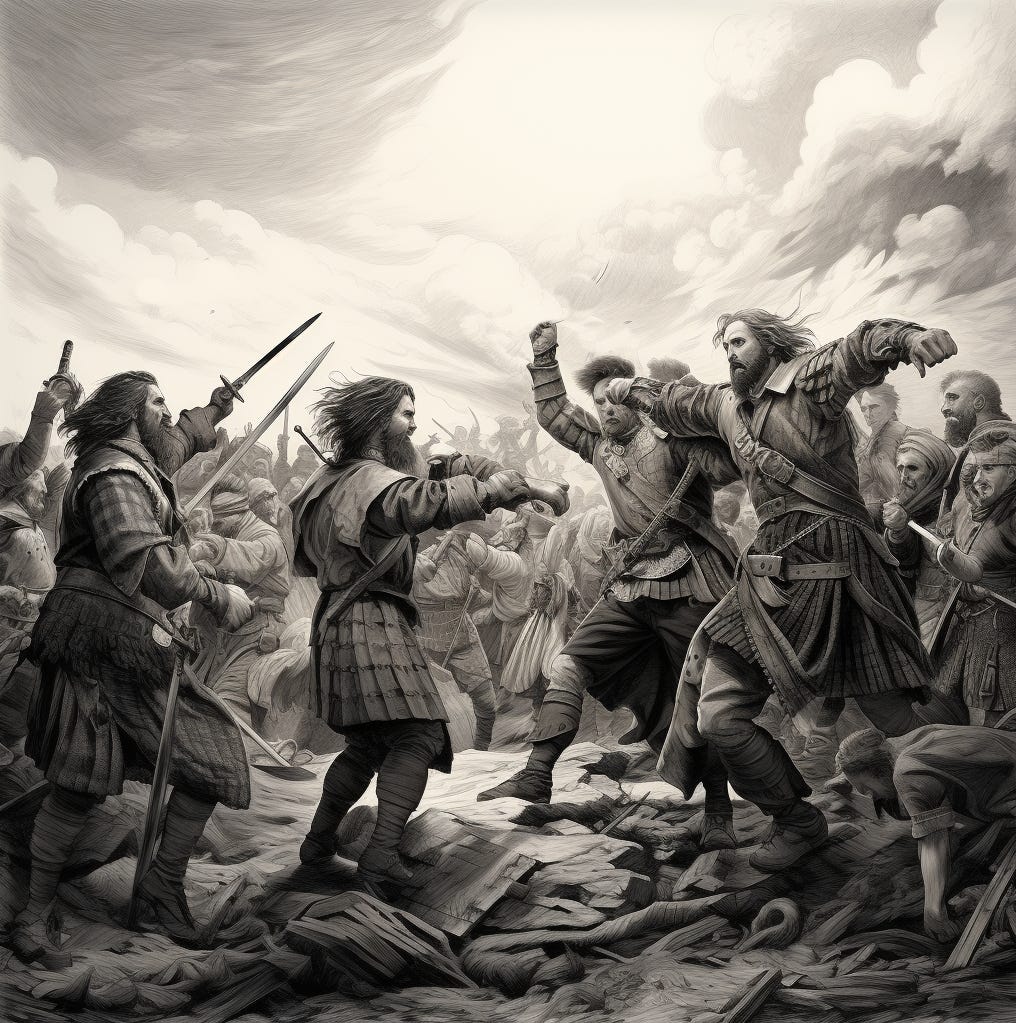The Centuries-Old Feud Between Clan Campbell and Clan Sinclair
In the rugged and storied highlands of Scotland, the clash of clans and the churning of ancient rivalries are woven into the very fabric of history. Among the many enmities that have played out across these rugged landscapes, the feud between Clan Campbell and Clan Sinclair stands out as one of the most enduring and contentious. This enduring conflict, with roots that trace back to centuries ago, paints a vivid picture of a Scotland where clans fought for territory, power, and prestige.
The Origins of Clan Campbell and Clan Sinclair
To understand the feud, we must first acquaint ourselves with the two principal players: Clan Campbell and Clan Sinclair.
Clan Campbell: With a history dating back to the 13th century, Clan Campbell hails from the region of Argyll in western Scotland. They have long been one of the most powerful and influential clans, their territorial holdings extending across the western coast and even into the heart of Scotland. Among their most famous members was Sir Colin Campbell, known as "Black Colin," whose exploits against rival clans, particularly the MacDonalds, are legendary.
Clan Sinclair: In contrast, Clan Sinclair, also known as the Sinclairs of Caithness, finds its roots in the northernmost reaches of Scotland. Their most coveted title was that of the Earls of Caithness, a claim that would become a central point of contention in the feud. The Sinclairs have a rich history of their own, with their ancestral seat being the grand Rosslyn Castle.
Early Encounters and Tensions
The early history of the Campbell-Sinclair feud can be traced back to territorial disputes and power struggles that often characterized the interactions between Scottish clans. As neighboring clans, tensions were inevitable. These early encounters, including border disputes and other conflicts, laid the foundation for the centuries of rivalry that would follow.
The 17th Century Conflict
The feud between Clan Campbell and Clan Sinclair reached its zenith in the 17th century. One of the pivotal moments came in 1675 when George Sinclair, the 6th Earl of Caithness, found himself in dire financial straits and was forced to sell his estates and titles to John Campbell of Glenorchy. This transaction set off a chain of events that would define the feud for years to come.
After George Sinclair's death in 1676, John Campbell declared himself the Earl of Caithness, effectively claiming a traditional Sinclair title. This action was met with outrage from the Sinclairs, particularly George Sinclair of Keiss, George Sinclair's son, who disputed Campbell's claim. With the support of other Sinclair families in the region, George Sinclair of Keiss seized control of the Caithness properties in 1678.
The legal battles and disputes that followed were intense. King James II of Scotland got involved, issuing a proclamation prohibiting George Sinclair from his lands and titles. However, Sinclair refused to comply, and he made life exceedingly difficult for the Campbells as they attempted to manage the land. Sinclair's determination went to the extent of demolishing Thurso East Castle after the Campbells took possession.
The Battle of Altimarlach
The most iconic confrontation of the Campbell-Sinclair feud occurred at the Battle of Altimarlach in 1680. The Campbells, led by John Campbell, launched an invasion of Caithness with a force of 800 men. George Sinclair had gathered a fighting force of 500 men in anticipation of the confrontation. The two sides met at the burn of Altimarlach.
The Sinclair clan chief decided to attack, despite some of his leaders suggesting they defer the battle to allow the men to recover. As the Sinclair forces charged, the Campbells revealed their hidden forces, launching a devastating counterattack. The Sinclairs were forced to retreat, and it is estimated that they lost up to 200 men in the battle.
The Legacy of the Feud
The Battle of Altimarlach had profound consequences for both clans. While the Sinclairs suffered a significant loss, the Campbells established dominance in the region. The feud left a lasting legacy, shaping the identities of both clans and affecting their relationships with others in Scotland.
Although the Campbell-Sinclair feud was long and bitter, there were instances when both clans attempted to reconcile or cooperate, even if temporarily. External factors, including political developments, sometimes mediated the feud, leading to moments of peace and collaboration.
The historic feud between Clan Campbell and Clan Sinclair continues to resonate with their descendants and within Scottish culture. Family histories, legends, and shared stories about the feud remain vital aspects of their heritage. In recent times, there have been initiatives aimed at bridging the divide and commemorating the past.
The Campbell-Sinclair feud has also made its mark on Scottish culture. References to the feud can be found in literature, music, and art. Songs and ballads have been composed, stories have been passed down through generations, and artistic interpretations continue to capture the essence of the rivalry.
A Legacy of a Turbulent Past
The feud between Clan Campbell and Clan Sinclair stands as a testament to the enduring nature of clan rivalries in Scottish history. It was a clash rooted in territorial ambitions, power struggles, and ancestral pride, and it left a lasting imprint on the culture and identity of both clans.





